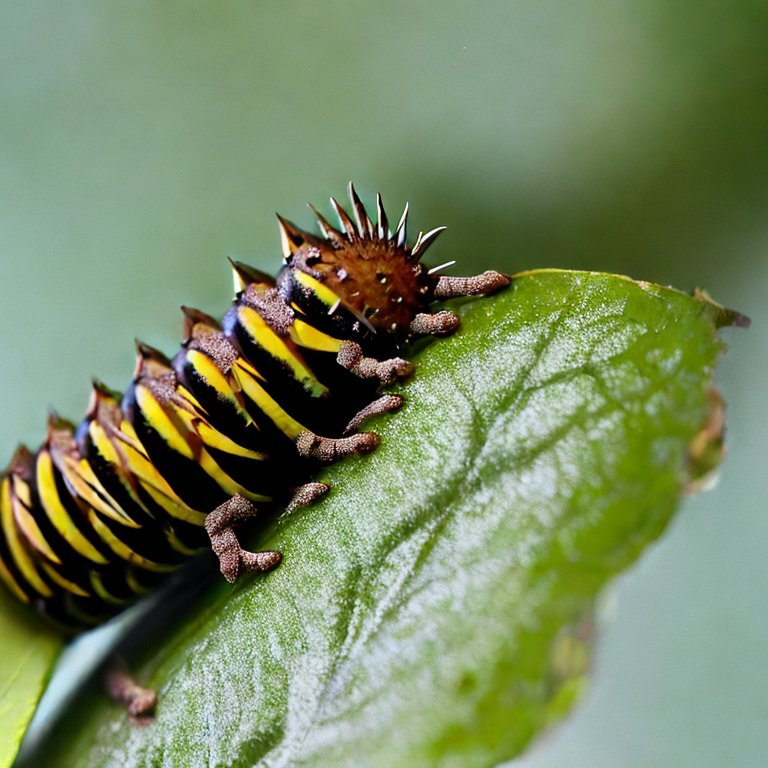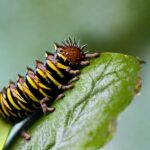
Caterpillars are the larval stage of butterflies and moths, and are known for their voracious appetite and ability to consume large amounts of plant material. But what do caterpillars eat? Are they herbivores, carnivores, or omnivores?
In this article, we will explore the diet and feeding habits of caterpillars to better understand their role in the ecosystem.
What is a Herbivore?
An herbivore is an animal that primarily feeds on plants. They are a type of consumer in the food chain, and rely on plants for their energy and nutrients. Herbivores can be found in a variety of habitats all over the world, and come in a range of sizes and shapes.
There are several different types of herbivores, including primary herbivores, which feed directly on plants, and secondary herbivores, which feed on plants that have already been partially consumed by primary herbivores. Some examples of herbivores include cows, goats, deer, rabbits, and elephants.
Herbivores have evolved a number of adaptations to help them extract energy and nutrients from plants. These adaptations may include specialized teeth and digestive systems that are able to break down plant matter, and the ability to extract nutrients from otherwise inedible plant parts.
Herbivores play a vital role in the ecosystem by feeding on plants and helping to control plant growth. They also serve as a food source for carnivores, which are animals that feed on other animals. The relationship between herbivores and plants is an important part of the balance of nature, and helps to maintain biodiversity in the environment.
What is a Caterpillar?
Caterpillars are the larval stage of butterflies and moths, and are known for their voracious appetite and ability to consume large amounts of plant material. They are typically long and slender, with a segmented body and a number of pairs of legs.
The scientific name for the caterpillar is larva. The term “larva” is derived from the Latin word “larva” meaning ghost or monster, and is used to describe the young, immature form of insects that undergoes metamorphosis before reaching the adult stage.
The term “caterpillar” is a common name for the larval stage of butterflies and moths, and is not a scientific term. The scientific name for the order of insects that includes butterflies and moths is Lepidoptera.
Caterpillars can be found in a variety of habitats, including forests, grasslands, gardens, and even urban areas. They feed on a wide range of plants, including trees, shrubs, herbs, grasses, and even agricultural crops. Different species of caterpillars have specific plant preferences, and may feed on only a few types of plants or a wide variety of plant species.
Caterpillars have a number of adaptations that allow them to extract energy and nutrients from plants. They have specialized mouthparts that are designed for chewing and grinding plant material, and their digestive systems are able to break down and absorb nutrients from plants. Some caterpillars also produce enzymes that help to break down plant cells and release additional nutrients.
Caterpillars are an important food source for other animals, such as birds, small mammals, and even larger insects. They also help to control plant growth by consuming leaves and other plant parts.
In conclusion, caterpillars are the larval stage of butterflies and moths and are known for their voracious appetite and ability to consume large amounts of plant material. They can be found in a variety of habitats and feed on a wide range of plant species. Caterpillars have specialized adaptations for extracting nutrients from plants and play a vital role in the ecosystem as a food source and plant growth regulator.
Is a Caterpillar a Herbivore?
Caterpillars are the larval stage of butterflies and moths, and are generally considered herbivores. This means that they primarily feed on plants and do not consume animal protein. Caterpillars have a voracious appetite and can consume large amounts of plant material in a short period of time.
Caterpillars have a number of adaptations that allow them to extract energy and nutrients from plants. They have specialized mouthparts that are designed for chewing and grinding plant material, and their digestive systems are able to break down and absorb nutrients from plants. Some caterpillars also produce enzymes that help to break down plant cells and release additional nutrients.
Also see: Are Butterflies Herbivores?

Final Thoughts
In summary, caterpillars are the larval stage of butterflies and moths, and are known for their voracious appetite and ability to consume large amounts of plant material. They have specialized adaptations that allow them to extract energy and nutrients from plants, and can be found in a variety of habitats all over the world.
Caterpillars play a vital role in the ecosystem as a food source and plant growth regulator, and are an important part of the balance of nature. Understanding the diet and feeding habits of caterpillars helps us to better understand their role in the natural world and the importance of maintaining biodiversity in the environment.
Lance has been passionate about the plant-based diet and we have been following a whole food plant-based diet for over 5 years. We focus on health, natural healing, weight management, animal rights, and the health of the planet and environment by focusing on whole plant-based foods and sustainable practices.
Learn more at the About Me page and follow on social media at the links below.






